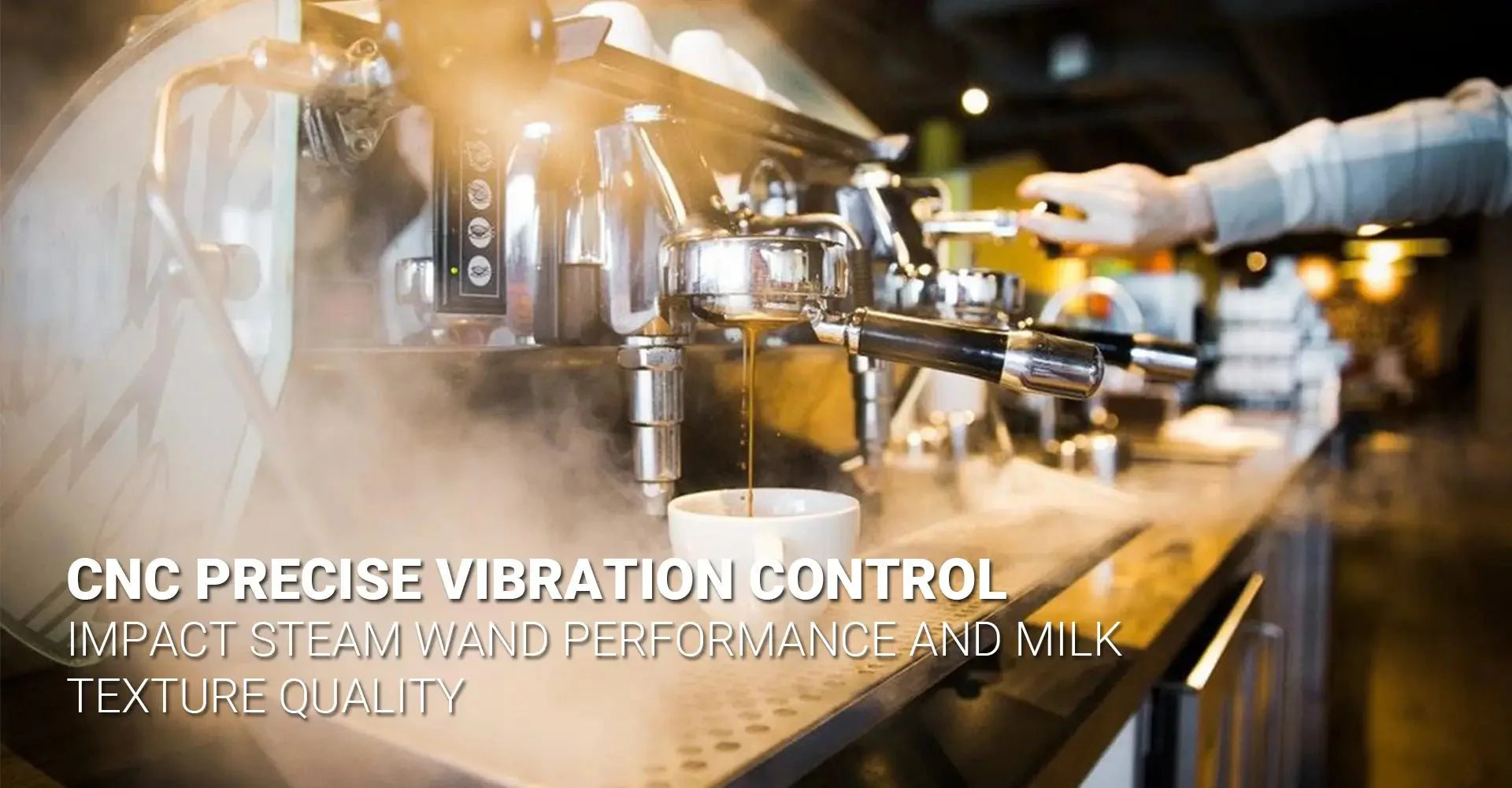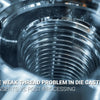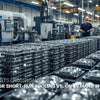How Does Precise Vibration Control Impact Steam Wand Performance and Milk Texture Quality?

How Does Precise Vibration Control Impact Steam Wand Performance and Milk Texture Quality?

The difference between ordinary coffee and exceptional espresso-based drinks often comes down to the smallest details. Among these crucial elements is the steam wand—a seemingly simple component that actually represents the pinnacle of precision engineering. Coffee enthusiasts and professionals alike may not realize that beneath the sleek exterior of a quality steam wand lies a world of complex engineering solutions addressing vibration control, material science, and surface finishing techniques that directly impact milk texture quality and equipment longevity.
Did you know that even microscopic vibrations of just 0.02mm can dramatically affect the quality of microfoam in your cappuccino? Or that achieving the mirror-like finish on premium steam wands requires a 15-step manufacturing process and specialized equipment capable of 0.005mm positional accuracy? This article dives deep into the technical aspects of steam wand design and manufacturing that separate average milk frothers from exceptional ones, with insights valuable for baristas, coffee shop owners, equipment manufacturers, and mechanical engineers alike.
Understanding the engineering behind steam wands not only helps coffee professionals make better purchasing decisions but also explains why some equipment consistently produces superior results. By examining the critical factors of vibration control, machining precision, and surface finishing requirements, we can appreciate why quality steam wands command premium prices—and why they're worth every penny for those serious about milk-based coffee beverages.
[Table of Contents]
- Why Does 0.02mm of Vibration Matter for Your Milk Texture?
- What Makes the Manufacturing Journey from Raw Tube to Steam Wand So Complex?
- Why Does Food-Grade Polishing Cost Significantly More Than Standard Finishes?
- How Do Material Choices Affect Steam Wand Performance and Longevity?
Why Does 0.02mm of Vibration Matter for Your Milk Texture?
Vibration in steam wands represents a critical yet often overlooked factor in milk texturing quality. When high-pressure steam moves through thin-walled tubes, it can generate harmonic vibrations between 280-320Hz—frequencies that might seem insignificant but can cause up to 40% fluctuation in steam pressure. These microscopic movements, sometimes as small as 0.02mm, create inconsistent aeration patterns that directly impact microfoam formation, resulting in larger, uneven bubbles instead of the silky, velvety texture prized by baristas worldwide.
Technical testing reveals that steam wands experiencing harmonic vibration create microfoam with inconsistent density, ranging from 0.25g/cm³ to 0.4g/cm³ within the same pitcher. Furthermore, uncontrolled vibration accelerates mechanical fatigue, reducing equipment lifespan by up to 60% compared to properly dampened systems. The most advanced commercial machines implement tuned mass dampers that have been shown to reduce vibration amplitude by an impressive 82%, resulting in consistently textured milk pour after pour. For baristas seeking professional results, properly engineered coffee equipment with vibration control technology makes a measurable difference in beverage quality.
Engineers address this challenge through several sophisticated approaches. Internal baffles strategically positioned within the steam path disrupt harmonic patterns without impeding flow. Multi-point mounting systems with silicone dampers isolate the wand from machine vibrations. Additionally, wall thickness optimization balances rigidity against heat transfer rates—thicker 1.8mm walls resist vibration but conduct heat more slowly than thinner 1.2mm alternatives. Premium manufacturers like La Marzocco employ 3-stage harmonic dampening systems that maintain 98% steam consistency over 10,000 cycles, demonstrating why such attention to vibration control yields tangible improvements in the cup.
What Makes the Manufacturing Journey from Raw Tube to Steam Wand So Complex?
The transformation from raw stainless steel tubing to finished steam wand involves precision engineering rarely seen outside aerospace applications. Starting with 500mm lengths of SUS316L tubing, manufacturers must maintain tight tolerances throughout a multi-stage machining process. The challenge intensifies with the need to achieve consistent wall thickness—typically 1.8mm in commercial applications—while working with an aspect ratio that makes the workpiece prone to deflection and vibration during machining operations.
CNC machining of steam wands requires specialized 4-axis turn-mill centers with positional accuracy of 0.005mm—equipment that costs upwards of $250,000. Cutting parameters must be precisely calibrated, with RPM ranges of 1800-2200 specifically chosen to avoid critical speeds that could induce chatter. Advanced manufacturers employ carbide dampened tool holders that reduce vibration by 65%, allowing for smooth internal boring operations that would otherwise be impossible in such slender components. The selection of appropriate metals and plastics for both the workpiece and tooling becomes critical in maintaining dimensional stability throughout the machining process.
Machinists familiar with steam wand production understand that conventional machining wisdom often fails when dealing with these challenging geometries. Feed rates must be carefully controlled at approximately 0.08mm/rev when using inserts with 1.5mm nose radius to maintain surface finish while minimizing vibration. The aspect ratio challenge becomes particularly evident when machining steam tip holes, where deviations of even 0.1mm can alter steam dispersion patterns and affect milk texturing. This explains why knock-off steam wands often perform poorly despite similar appearances—they lack the precision manufacturing processes that ensure consistent performance across thousands of steaming cycles.
Why Does Food-Grade Polishing Cost Significantly More Than Standard Finishes?
The mirror-like finish on premium steam wands isn't merely aesthetic—it's a functional requirement with direct food safety implications. Achieving the food-grade surface finish necessary for NSF compliance requires specialized polishing techniques that go far beyond standard metal finishing procedures. While basic mechanical polishing might achieve a visually appealing shine, only advanced multi-stage processes can create the microscopically smooth surface that prevents bacterial colonization and ensures easy cleaning.
The cost difference between standard and food-grade polishing services is substantial: mechanical polishing typically costs $2.50/cm² and achieves Ra 0.8μm (roughness average), while electropolishing costs approximately $12.80/cm² but achieves Ra 0.1μm. This investment directly impacts safety and maintenance—bacterial adhesion testing reveals 63 CFU/cm² (colony forming units) on mechanically polished surfaces versus just 9 CFU/cm² on electropolished surfaces, well below the FDA limit of 100 CFU/cm². Additionally, properly polished surfaces reduce daily cleaning time from 8 minutes to 3 minutes, significantly improving operational efficiency.
The demanding requirements for steam wand polishing stem from their unique operating environment—constantly exposed to milk proteins and sugars at varying temperatures. Surface validation methods range from simple field tests like the water break test (a continuous water film indicates Ra ≤0.4μm) to sophisticated laboratory techniques such as white light interferometry conforming to ISO 25178-2 standards. NSF/ANSI 51 compliance requires Ra ≤0.8μm, but premium manufacturers often achieve Ra ≤0.2μm through multi-axis polishing techniques. This exceptional finish not only enhances food safety but also improves milk flow characteristics during texturing, creating more consistent microfoam while extending equipment life through easier cleaning and reduced mineral buildup.
How Do Material Choices Affect Steam Wand Performance and Longevity?
The choice between 304 and 316L stainless steel fundamentally shapes steam wand performance characteristics and service life. While 304 stainless steel offers excellent machinability (approximately 85% of free-cutting steel), 316L provides superior corrosion resistance—particularly important given the constant exposure to moisture, heat cycling, and cleaning chemicals. This material decision represents a critical trade-off between manufacturing complexity and long-term reliability that manufacturers must carefully consider.
Technical specifications highlight the practical differences between these materials in steam wand applications. 304 stainless steel tolerates chloride concentrations up to 500ppm before showing corrosion, while 316L remains stable up to 2000ppm—a crucial advantage in regions with harder water. However, 316L's machinability rating of 72% increases manufacturing complexity and polishing costs. Case studies comparing Breville consumer machines (typically using 1.2mm thick 304 stainless) with commercial units (1.8mm thick 316L) demonstrate the real-world impact: consumer units average 2 years of service life versus 8+ years for properly engineered commercial wands. This significant difference in longevity makes material selection a critical factor when investing in quality coffee equipment.
Beyond basic material selection, advanced engineering considerations include wand geometry and tip design. Testing reveals that 4-hole tips produce microfoam with density around 0.35g/cm³ compared to 0.28g/cm³ for single-hole designs, while heat transfer rates differ significantly at 120°C/s versus 85°C/s respectively. The optimal taper angle of 12° maximizes vortex formation during steaming, creating ideal milk circulation patterns. These design elements interact with material properties in complex ways—thinner walls improve heat transfer but increase susceptibility to vibration and corrosion, highlighting why proper material selection cannot be considered in isolation from overall design philosophy and manufacturing capabilities.
Conclusion
The engineering behind high-quality steam wands reveals why these seemingly simple components command premium prices in the specialty coffee market. From vibration control techniques that ensure consistent microfoam quality to precision manufacturing processes maintaining tolerances of 0.005mm, every aspect of steam wand design reflects a deep understanding of both mechanical engineering principles and practical barista requirements. The significant investment in food-grade polishing and appropriate material selection directly translates to improved performance, enhanced food safety, and substantially longer service life—making quality steam wands a smart investment rather than an unnecessary expense.
[External Links Recommendation]
[surface finish requirements for food-grade equipment][^1]
[Regulatory standards for stainless steel in food applications][^2]
[Industry standards for microfoam quality assessment][^3]
---
[^1]: Understanding these requirements is crucial for ensuring compliance and safety in food processing equipment.
[^2]: This resource will help you grasp the essential regulations that ensure food safety and quality in stainless steel usage.
[^3]: Exploring these standards can enhance your knowledge of quality control in milk steaming, crucial for baristas and dairy professionals.
-
Posted in
CNC machining





